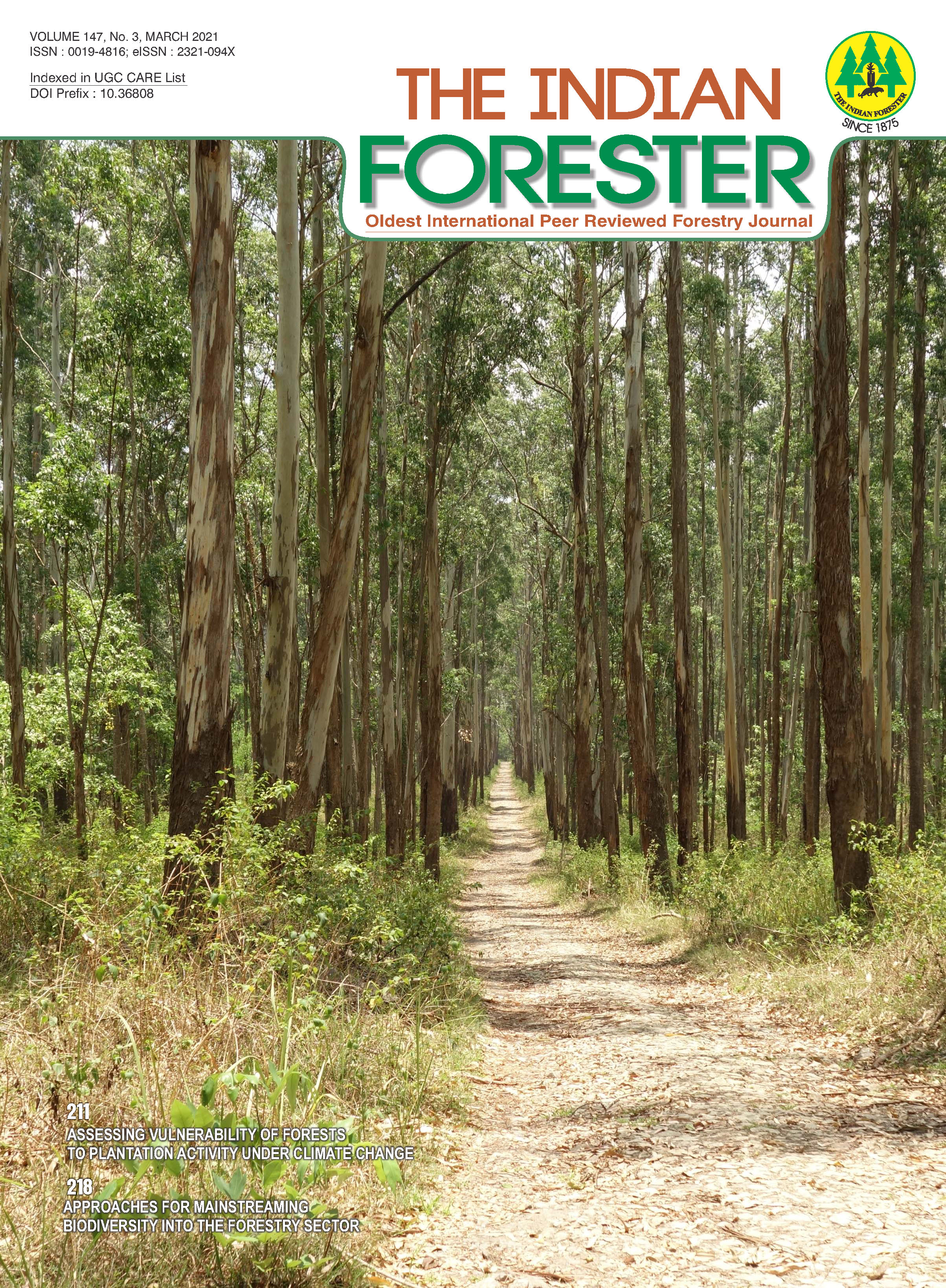Ethno-Survey of Traditional Use of Plants in Lolab Valley, Kashmir Himalaya
DOI:
https://doi.org/10.36808/if/2021/v147i3/153810Keywords:
Medicinal Plants, Traditional Knowledge, Lolab Valley, Kashmir Himalaya.Abstract
Kashmir Himalaya lies in the north-western part of India. It is geographically a distinct belt, which is immensely rich in biological and cultural diversity. Medicinal plants form an important element of indigenous primary medical system of this region.An ethno-survey was conducted among the tribal communities of Lolab valley of Kashmir Himalaya to document the medicinal plants and associated traditional knowledge of its population using various interviews and group discussions. During the course of study a total of 70 plant species belonging to 68 genera and 42 families were reported to have medicinal importance. It was found that there is a very little information available about cultivation, sustainable harvesting and uses of these medicinal plant species. Hence there is a dire need to document these valuable plants and the traditional treasure associated with them.References
Ayensu E.S. (1996). World medicinal plant resources. In: Conservation for productive agriculture (V.L. Chopra and T.N. Khoshoo, Eds.), Indian Council of Agricultural Research, New Delhi, India, pp. 15-27.
Croteau R., Kutchan T.M. and Lewis N.G. (2000). Natural products (secondary metabolites). In: Biochemistry and Molecular Biology of Plant (B. Buchannan., W. Gruissem and R.L. Jones, Eds.), Rockville, pp. 1250-1318.
Dar G.H., Veer J., Kachroo P. and Buth H.H. (1984). Ethno botany of Kashmir, Sudh Valley, Journal of Economic and taxonomic Botany, 3: 668-675.
Dar P.A., Rashid N., Parwez A. and Kalam A. (2018). Ethnomedicinal practices of Kashmir valley: A review, Journal of Pharmacognosy and Phytochemistry, 7(6): 278-284.
Jain S.K. (1994). Ethnobotany; its scope and study, Indian museum bulletin, 2: 39-43.
Jan M., Dhyani S. and Mir T.A. (2018). Ethnobotanical study of plants used by ethnic people of Karbari Grant Village Dehradun, Uttarakhand, SERBD-International Journal of Multidisciplinary Sciences, 1(03): 1-6.
Kaul M.K. (1997). Medicinal plants of Kashmir and Ladakh, Temperate and cold Arid Himalaya. Indus publishing co. Delhi, 8: 123.
Lone F.A., Lone S., Aziz M.A. and Mala F.A. (2012). Ethno botanical studies in tribal areas of Kupwara, India, International Journal of Pharma and Bioscience, 3(4): 399-411.
Lone P.A., Bhardwaj A.K. and Bahar F.A. (2013). A study of some locally available herbal medicines for the treatment of various ailments in Bandipora district of J&K, India, International Journal of Pharma Biosciences, 4(2): 440-453.
Malik A.H., Khuroo A.A., Dar G.H. and Khan Z.S. (2011). Ethnomedicinal uses of some plants in Kashmir Himalaya, Indian Journal of Traditional Knowledge, 10(2): 362-366.
Phondani P.C., Maikhuri R.K. and Saxena K.G. (2014). The efficacy of herbal system of medicine in the context of allopathic system in Indian Central Himalaya, Journal of Herbal Medicine, 4: 147-158.
Pie S.J. and Manandhar N.P. (1987). Sources of some local medicines in the Himalayan Regions, Ecosystem, 97-112.
Prasad R. and Bhattacharya P. (2003). Sustainable harvesting of medicinal plant resources. In: Contemporary Studies in Natural Resource Management in India (S.B. Roy, Ed.), Inter-India Publications, New Delhi, India, pp. 168-198.
Rajadurai M., Vidhya V.G., Ramya M. and Bhaskar A. (2009). Ethno-medicinal plants used by the traditional healers of Pachamalai hill, Tamilnadu, India, Ethnomedicine, 3(1): 39-41.
Santhya B., Thomas S., Isabel W. and Shenbagarathai R. (2006). Ethnobotanical plants used by the Valaiyan community of Piranmalai Hills (Reserved Forest), Tamil Nadu, India-a pilot study, African Journal of Traditional, Complementary and Alternative Medicines, 3(1): 101-114.
Singh N.P., Singh D.K. and Uniyal B.P. (2002). Flora of Jammu & Kashmir: vol.1: Pteridophytes Gymnosperms and Angiosperms. (Botanical Survey of India), New Delhi, India.
Yadav M., Khan K.K. and Beg M.Z. (2012). Ethnobotanical plants used for curing skin diseases by tribal's of Rewa Districts (Madhya Pradesh). Indian Journal of Life Sciences, 2(1): 123-126.
Downloads
Downloads
Additional Files
Published
How to Cite
Issue
Section
License
Unless otherwise stated, copyright or similar rights in all materials presented on the site, including graphical images, are owned by Indian Forester.





